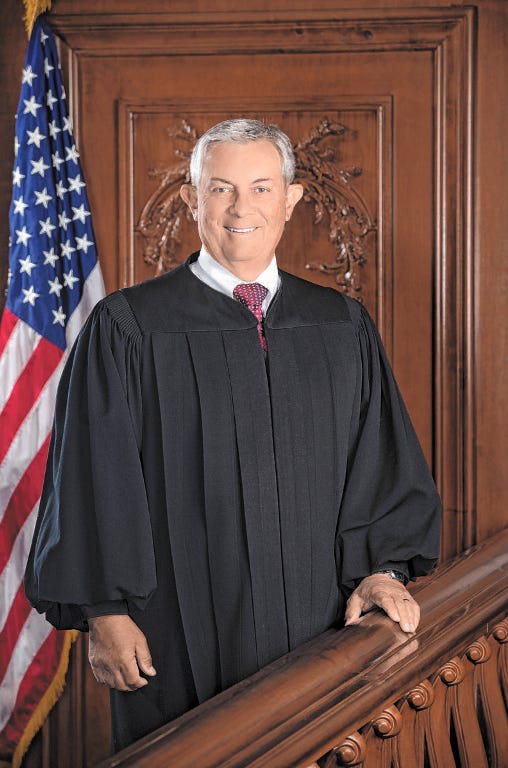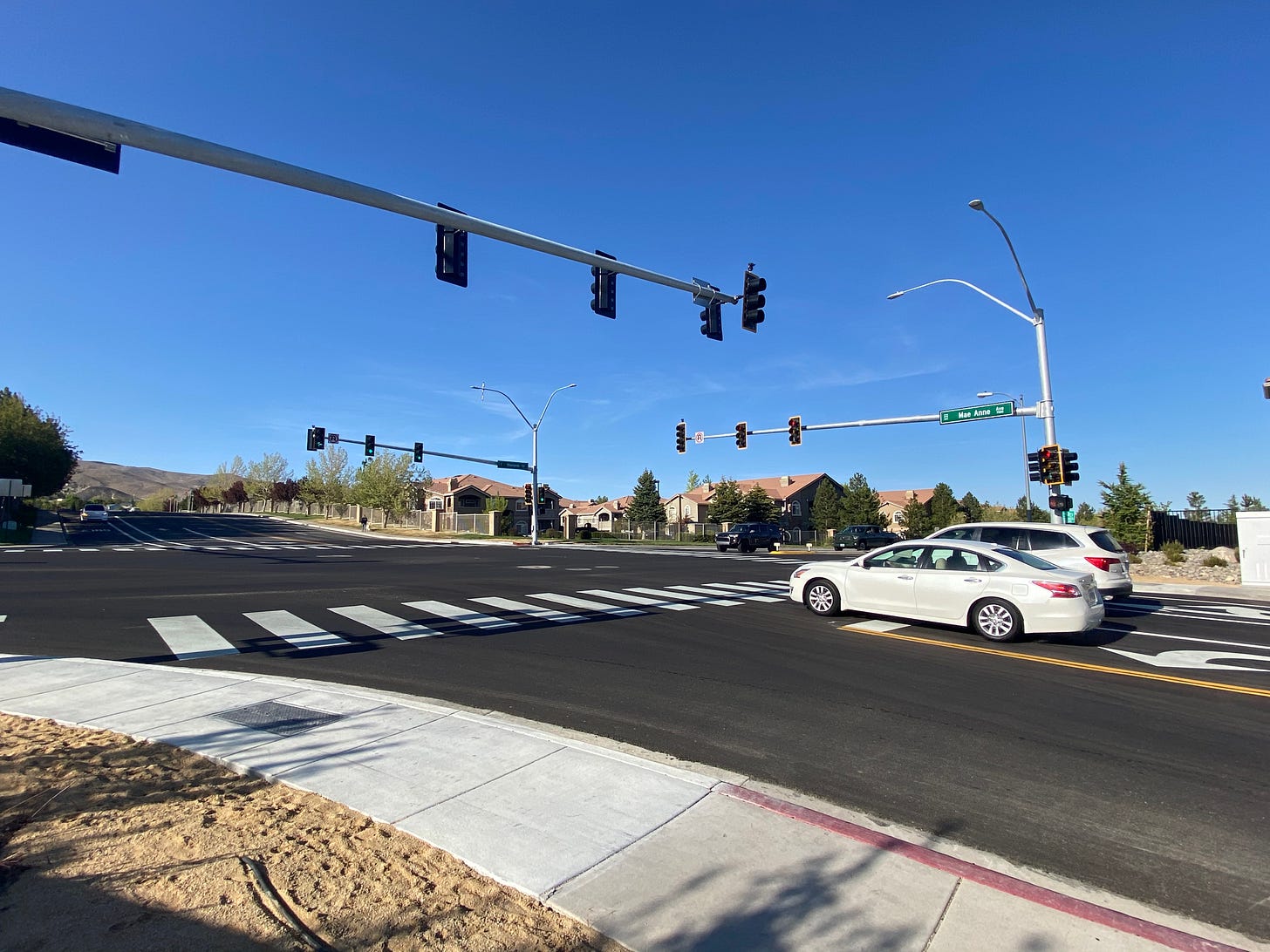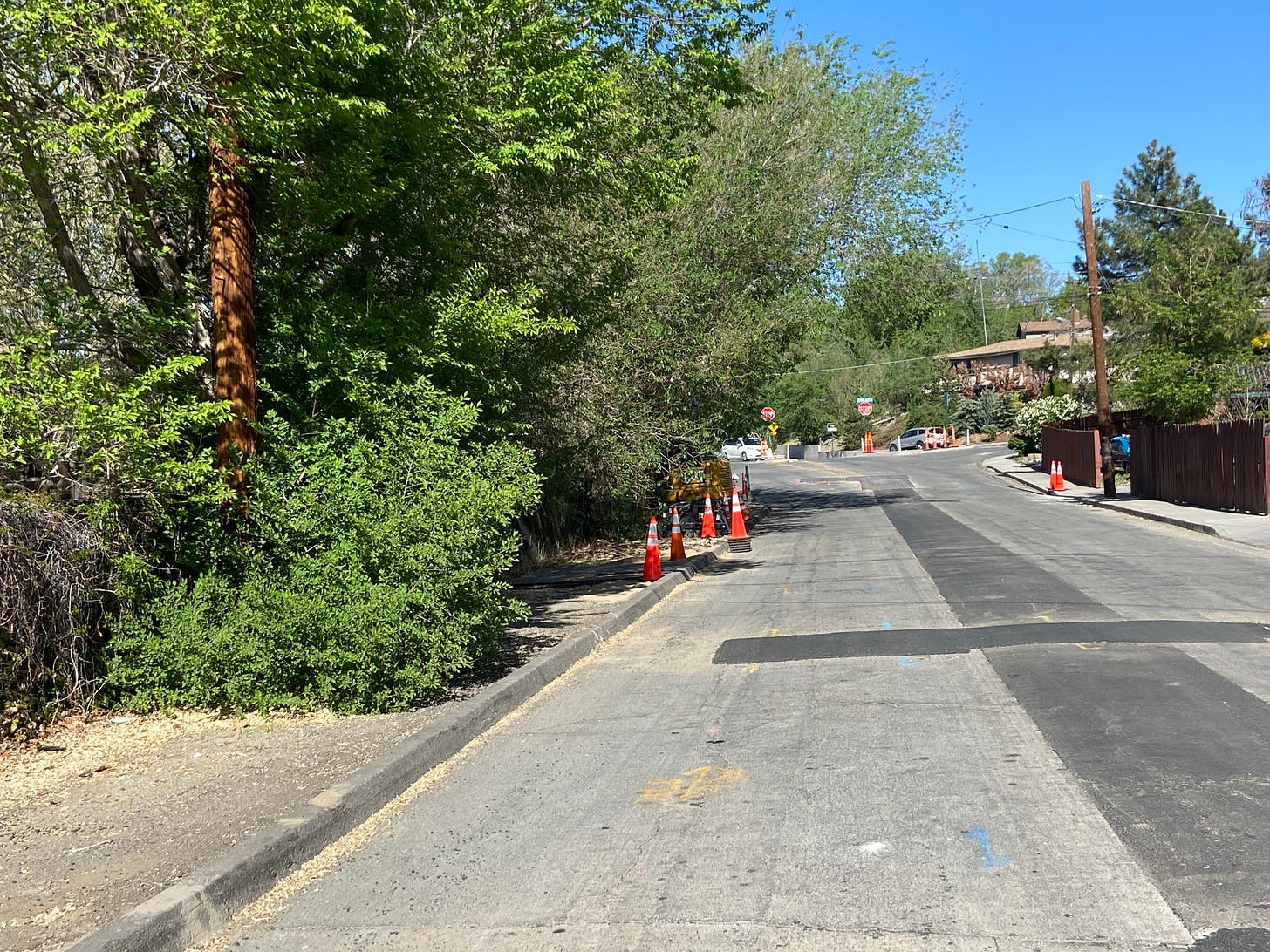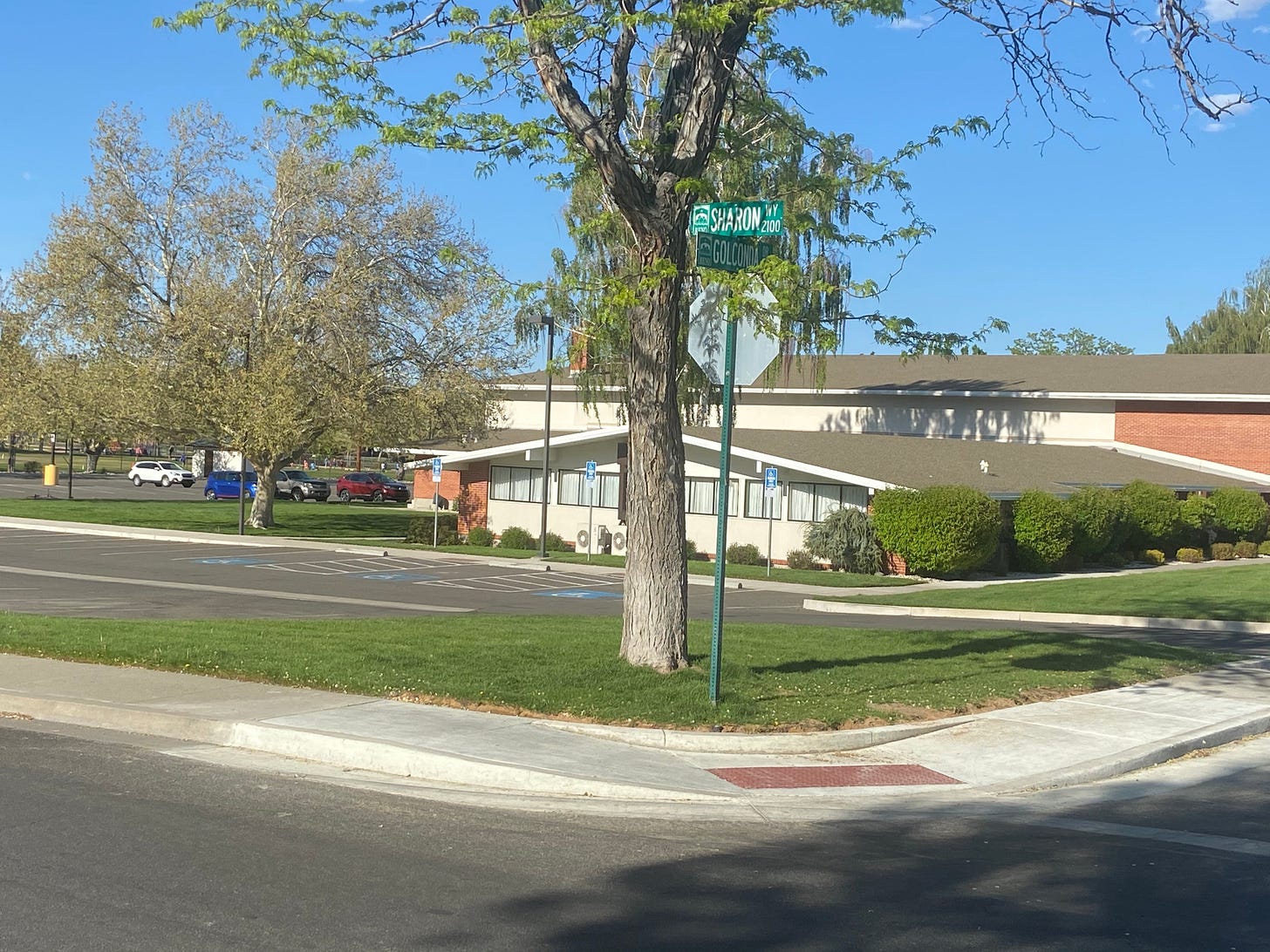Happy May! I hope that this finds you well in this season of blooms. I am doing well. Fully vaxxed, we visited people in our lives after a year of deferred gatherings. I think that spring is the most optimistic season of all, and this year it feels particularly so.
I’ve been starting to think that for lack of a better term, the growth and development in our region, or placemaking as I prefer to call it, is off kilter. To be more specific, increasingly confrontational and winner takes all. It does not have to be this way. While we are experiencing a period of robust growth, we have weathered such periods previously, and other communities accommodate growth without the heightened conflict we are experiencing.
I’ve been using sports analogies to explain this observation. Under law, the appointed Planning Commission has final say on several sort of development approvals (as does city staff on permits that are known as administrative approvals). When appealed, both of these types of approvals come to the City Council for final decision. Like a baseball came going to the bottom of the ninth inning (sometimes not necessary when the home team is ahead), many projects are going to the bottom of the ninth with appeals to the Council. This means someone was not happy with the lower-level decisions.
The next sporting analogy is about American football. Sometimes games go into overtime periods like an extra quarter. Most disturbingly of all in our development process, far too many development projects are going into the extra quarter of district court judication.
How these extended periods play out is all over the map. Most disturbingly in court cases, has been an outcome of judges convening City and development representatives in closed door settlement conferences. Citizens who participated in public hearings are not a part of these conversations or even privy to a record of what was discussed. Whatever the court outcome, a development proposal going into overtime prolongs uncertainty to all involved (e.g., development applicants, neighboring residences, city staff etc.) and this is not optimal.
Why is this happening? Like many issues in our complex modernity, there is usually not one reason for an occurrence but several interrelated and compounding ones.
First of all, I would say is that with three city managers in eight years, Reno has not been a consistently well managed organization with continuity of staffing or strategic direction. All of this came upon the tail of the Great Recession that obliterated staffing levels by one-third of the city workforce. For this reason, I am hopeful that Manager Thornley still only in his seventh month on the job, can have a successful stint.
The second reason for our current challenges is poor infrastructure planning. While most attention is on the development process of master planning, zoning and regulation, the long-term decisions related to where, when and how to pay for infrastructure is more impactful to a community’s built environment. Unfortunately, the haphazard and developer driven land use decisions are often front loaded with the infrastructure planning coming in behind. Below follows the recent history of Verdi that illustrates this point.
Third is the political influence that development interests have because they are the primary financing sector of local elected office holders’ campaigns. No one should be Pollyanna; money is an influencer in political decision making (and for the record, judges are politicians in Nevada). I’ve run three times against better funded opponents and each time was the disfavored candidate of a surprisingly cohesive local development industry. It takes a lot of work to solidify a broad contributor base in order to run a competitive campaign without this funding.
The Interesting Story About Verdi
Verdi has a storied history. And perhaps other than incorporated Sparks is the place closest to Reno, that has its own unique community identity. Some local stewards of that history have explained it here and invite you out their way.
This community was put on its current trajectory of becoming west Reno, in 2002 with the adoption of the Truckee Meadows Regional Plan. One theoretical pro-planning feature in our region is the existence of a regional planning agency. If you want to know more about this agency (I sit on its governing board as one Reno’s representatives) you can learn here.
Suffice to know, regional planning is a recognized good thing as it can mediate/buffer conflicts and competition between jurisdictions and ensure that there is coordination in planning for and accommodating growth. However, I once spent time looking over microfiche news stories about the 1989 formation of the regional planning agency and found it curious about how our area came about having regional planning. I concluded that it was promoted by a Washoe County Commission that had hopes that Washoe County would follow a Clark County model with populous pockets of unincorporated lands. Regional planning was also a counter response to a Reno City Council that was embarking upon legitimate and reasonable growth management steps.
The regional plan must be updated every five years and other than a few cosmetic updates, the plan’s preparation is a contentious endeavor. The most notable update was the 2002 plan. At that time, Reno that was led by a growth friendly Council had begun to flex muscle in deploying some of the favorable laws that allow Reno be in the driver seat for regional growth allocation. With tables turned, Washoe County objected to Reno’s expansion ideations. When it was all said and done, the Washoe County Commission sued the Regional Planning Agency over the plan content.
When the lawsuit landed on the docket of then District Judge Hardesty, things took an interesting turn. A contingency of Verdi area landowners who had not gained traction during the public process leading to the plan’s preparation were somehow able to get what they wanted under the judge’s oversight. Through a series of settlement conferences, the Verdi landowners got the plan amended to designate into Reno’s corporate lands about 7,000 acres for over 3,000 residential units and accompanying industrial and commercial uses.
This was a truly remarkable and surprising outcome. Judge Hardesty who, at the time was seeking a seat on the state Supreme Court bench to this day has status as the region’s most influential land use planner. The settlement that he forged involved an upzoning of these mountainous semi-rural and rural lands absent technical analysis of development suitability. He even wrangled the judiciary into allowing him to take oversight of the settlement agreement with him up to the state bench. Washoe County’s Verdi area plan that should have been the template for a reimagined public process, identification of land uses, and programming for infrastructure, was summarily cast aside in this closed door development scheme.
Here is a link that summarizes the settlement.
In 2012 when I joined the Reno City Council in the depths of the Great Recession, thoughts about Verdi development were not foremost. As the Great Recession receded, the first Verdi development project to come was the 324 residential unit West Meadows Estates subdivision located along old Highway 40. I was moved to vote against the project out of concerns raised by Washoe County staff that called out unsuitable infrastructure including the undersized rural highway accessing the property. The County asked for a revision to the the Verdi area plan that Judge Hardesty pre-empted, as a first step in readying the area with infrastructure for the development to follow.
I continued to echo that perspective as other projects came forward on both sides of Interstate Highway 80. Since 2014, most of these lands have received the final approvals needed from the Reno Council that I serve upon. Unfortunately, infrastructure is not up to par (namely a costly highway overpasses and drainage facilities). In addition, Reno is not well positioned to provide fire and police services to the area.
As a TMWA board member, my colleagues and I did step up to upgrade Verdi’s water infrastructure when we decided that TMWA should purchase the Boomtown water system and integrate it into the TMWA system. This was motivated by desperation from my perspective, as I felt it untenable in these times that new Reno residents would be served by a private satellite water company.
So this is the Verdi story according to me. I am worried to watch this area build out because I believe it has the most vulnerabilities of the outlying areas in terms of fire danger and inadequacy of infrastructure.
It is still not too late to develop a plan to knit together the hodge-podge that Verdi has become. I’ve frequently called for a joint city/county Verdi area plan but that has fallen upon deaf ears. It seems that the only time the Council discusses Verdi more or less, is when someone is asking to implement one of Judge Hardesty’s land entitlements.
I envision a plan that would build upon the compact community character of old town Verdi and promotes investment in that core area and the immediate surrounds. Bike, pedestrian and local roadway connections to old town should be improved and warehousing truck traffic routes clearly delineated. Other community needs that have not been adequately addressed like open space connections and sewer line extensions should also be evaluated.
Hopefully there will be a planning effort in the not too far off future. I believe that the objection to a plan came from Verdi landowners looking to cash in on Judge Hardesty’s approvals because they did not want to assigned an infrastructure tab. As they will be moving after selling land and developing, the community and new residents can hopefully persuade local officials to convene an effort of self-determination for the community’s needs.
Infrastructure Week!
I had my own personal infrastructure week. As I mentioned previously, poor infrastructure planning is not helping our community. Most critical about infrastructure is finding the right balance between maintaining and not allowing deterioration of existing infrastructure, while bringing on and building new infrastructure needed for growth. In Ward 1 as we are almost entirely built out, the focus is mostly on maintenance and retrofitting.
Here are some new things:
A signalized intersection at Sharlands Ave/Mae Anne Ave and Somersett Parkway. A former Ward 1 Neighborhood Advisory Board member brought the need for this light to my attention when she moved into the apartments at the northeast corner of the intersection. After meeting her one chilly morning during a weekday commute hour, I began to advocate for the signal as the four-way stop was no longer effective to handle the build out of the Sharlands and Sommersett.
The California Ave/Mayberry Drive split is getting improved but I have yet to see sidewalks installed along the backside of Westfield Village on the California Avenue route to Hunter Lake Elementary School. Over the past several decades, national attention has been given to filling in gaps in the pedestrian environment near schools. I’ve been championing sidewalks here because the southside of California Ave also has sidewalk deficiencies. The edges where two subdivisions meet up are often forgotten no-person lands, and this spot is a case in point.
Speaking of school routes, the City installed a ramp on Sharon Way a block from Jessie Beck Elementary School at my request. One thing I love about the Americans with Disabilities Act (ADA) is that when improvements are made for those who need it, others also benefit. Over the years I’ve seen so many non-disabled people (e.g., stroller parents, kids on scooters) navigate this intersection at Golconda Drive. Now, not only those who enjoy the civil rights associated with the ADA are advantaged, but others also.
Finally, An Update on the Mountaingate Drive Fence
For the past month or so, I’ve been twice weekly conversing with Manager Thornley about this fence on private property that is blocking the Juniper Ridge subdivision from the Steamboat Ditch trail. Readers may recall that it was a permit issued in error despite concerns expressed by constituents that I conveyed to Manager Thornley before the permit was issued.
Mr. Thornley informed me on Friday that he has a meeting scheduled on Wednesday with the homeowner’s and Homeowners Association attorneys. He should have a date certain for the pathway’s restoration after that meeting. This permit error has been a time-consuming headache for all and hopefully lessons learned.
Thanks for reading and enjoy spring!!
P.S. - It occurs to me that I may be one of the last people around using two spaces after a period. I am not making a commitment one way or another about this right now. I need to give it more thought.







